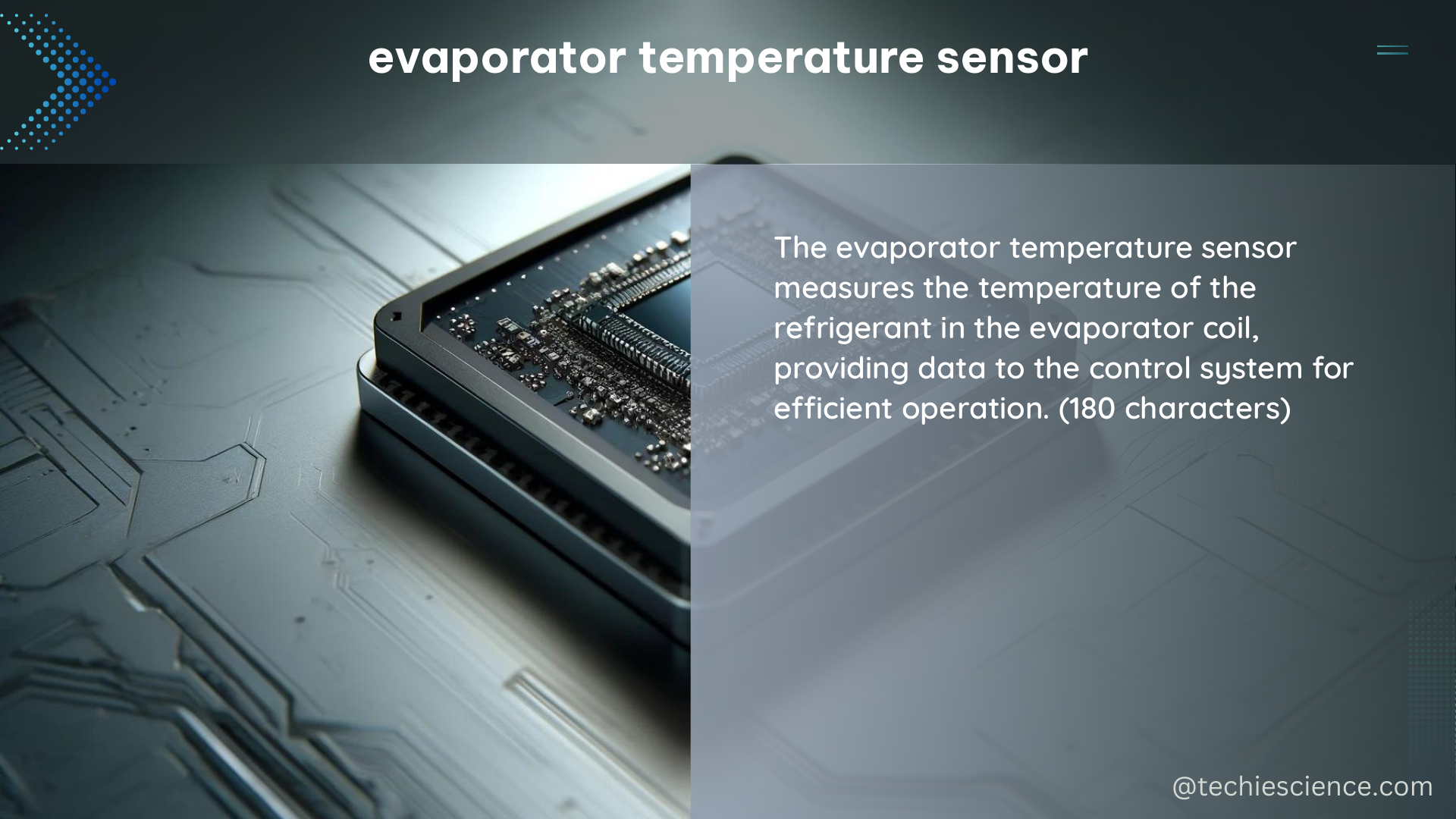The evaporator temperature sensor is a critical component in air conditioning systems, responsible for precisely measuring the temperature of the evaporator core. This measurement is vital in preventing the evaporator core from freezing, ensuring the system operates effectively without causing any harm. The sensor’s high accuracy and long-term stability are essential for the optimal function of HVAC systems.
Sensor Characteristics and Performance
The response time of evaporator temperature sensors is a crucial feature, with these sensors capable of detecting rapid changes in temperature within 10 seconds. This rapid response facilitates timely adjustments to the system, enhancing its overall performance.
In terms of design and durability, evaporator temperature sensors are characterized by their small size, typically ranging from 10 to 20 mm in length, and flexible packaging, allowing for straightforward installation in diverse systems. The sensors are designed with a snap-fit housing and an easy twist-to-lock design, minimizing the risk of wiring insulation damage and simplifying the installation and service process. These sensors have passed a 2000-hour submersion test, underscoring their reliability and ability to withstand harsh environments.
Evaporator temperature sensors are available in various configurations, including pigtail and fin-type versions, catering to different application requirements. They offer alternate Resistance vs. Temperature (RvT) curves, with typical resistance values ranging from 10 kΩ to 100 kΩ at 25°C, and come in various geometries to meet specific package requirements, ensuring compatibility across a wide range of HVAC systems.
Sensor Selection Criteria

When selecting the right evaporator temperature sensor, it is essential to consider various factors, including the symptoms of a bad or failing sensor, such as no cold air from the AC system, temperature fluctuations, and the AC compressor not activating. Critical selection criteria include:
- Accuracy: Evaporator temperature sensors typically have an accuracy of ±1°C to ±2°C, ensuring precise temperature measurements.
- Temperature Range: The sensor must be capable of operating within the required temperature range, which can vary from -40°C to 120°C, depending on the application.
- Robustness: The sensor should be designed to withstand environmental factors, such as vibrations, moisture, and temperature extremes, to ensure long-term reliability.
- Application Requirements: The sensor must be compatible with the specific HVAC system, considering factors like the medium (e.g., water, air, gas) and installation location (e.g., air conditioning systems, engines).
- Cost: The sensor’s cost should be balanced with the required performance and durability for the application.
Sensor Replacement and Installation
To replace a faulty evaporator temperature sensor, one can follow the instructions provided in various online resources, such as the BMW forum post. This post provides a detailed guide on replacing the evaporator temperature sensor in a BMW 323Ci, including removing the cover under the driver’s side dash and dealing with the heater duct in the way.
The general steps for replacing an evaporator temperature sensor typically involve:
- Locating the sensor, which is often situated near the evaporator coil or in the air conditioning system.
- Disconnecting the electrical connector and removing any mounting hardware or clips.
- Carefully extracting the old sensor and cleaning the mounting surface.
- Installing the new sensor, ensuring a secure fit and proper electrical connection.
- Reassembling the HVAC system and testing the new sensor for proper operation.
It is essential to follow the manufacturer’s instructions and use the appropriate tools and techniques to ensure a successful sensor replacement and avoid any damage to the HVAC system.
Conclusion
The evaporator temperature sensor plays a crucial role in ensuring the optimal function of HVAC systems. Its high accuracy, fast response time, and durable design make it an essential component in various applications that demand precise temperature monitoring. By understanding the sensor’s characteristics, selection criteria, and replacement process, HVAC technicians and DIY enthusiasts can effectively maintain and troubleshoot their air conditioning systems, ensuring optimal performance and energy efficiency.
References:
– Evaporator Temperature Sensor Design and Performance Characteristics
– Diagnostic Help on A/C Evap Temperature Sensor
– Looking for Evaporator Temperature Sensor

The lambdageeks.com Core SME Team is a group of experienced subject matter experts from diverse scientific and technical fields including Physics, Chemistry, Technology,Electronics & Electrical Engineering, Automotive, Mechanical Engineering. Our team collaborates to create high-quality, well-researched articles on a wide range of science and technology topics for the lambdageeks.com website.
All Our Senior SME are having more than 7 Years of experience in the respective fields . They are either Working Industry Professionals or assocaited With different Universities. Refer Our Authors Page to get to know About our Core SMEs.